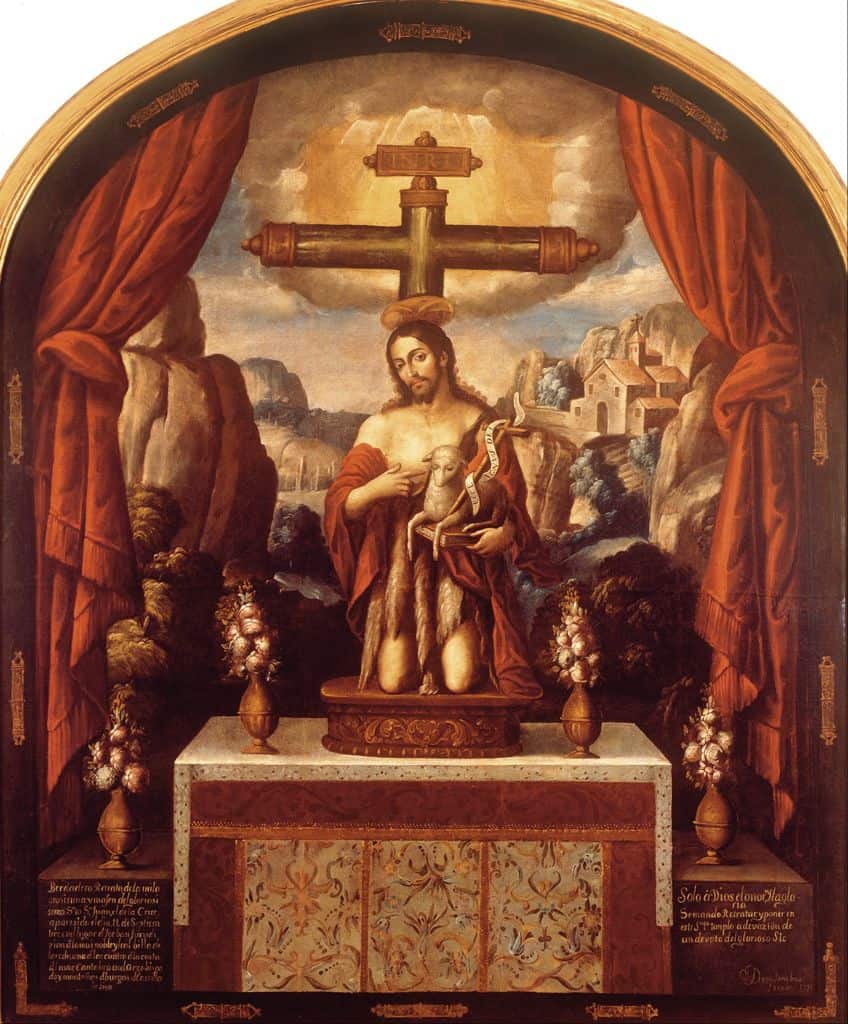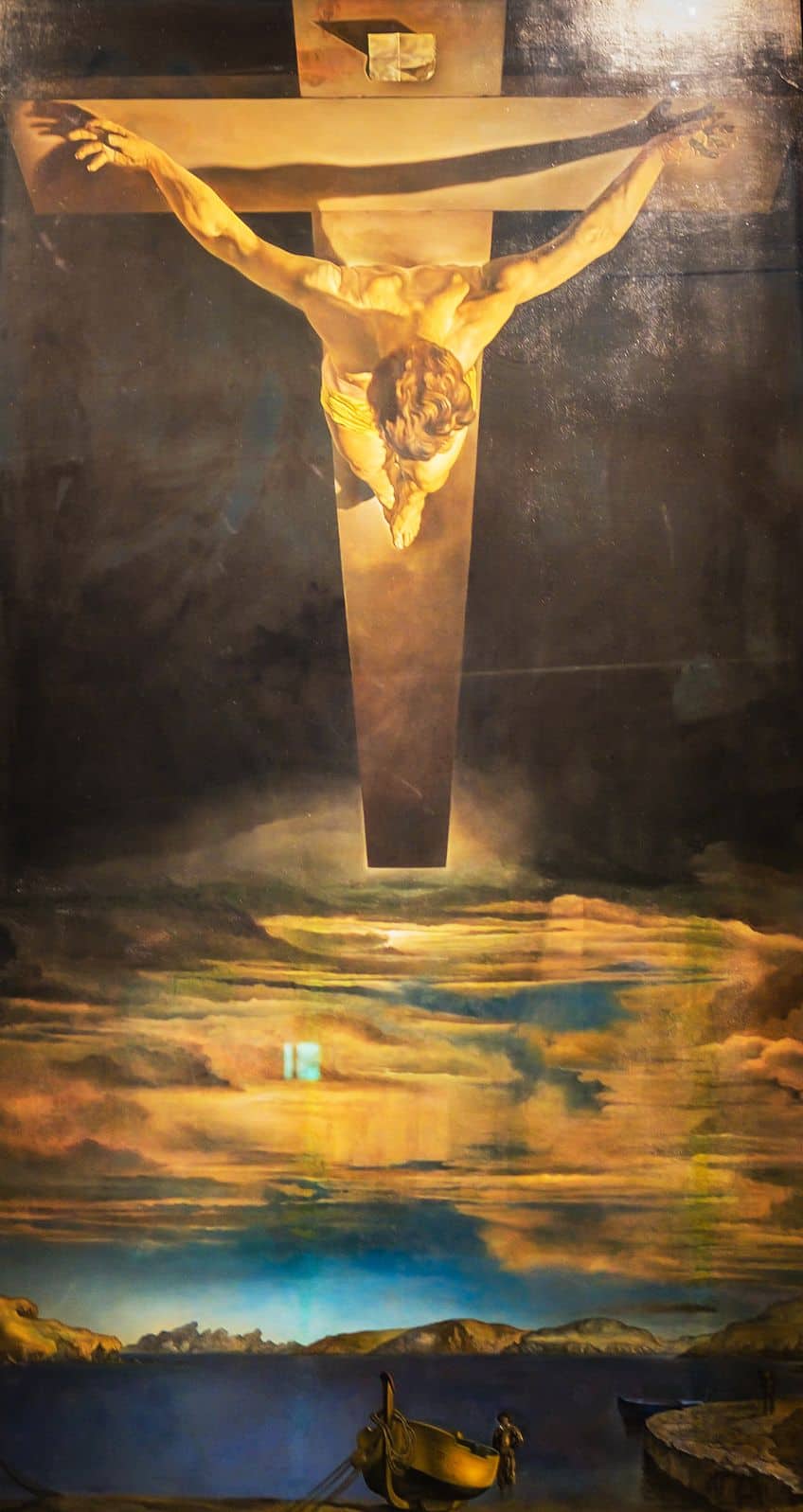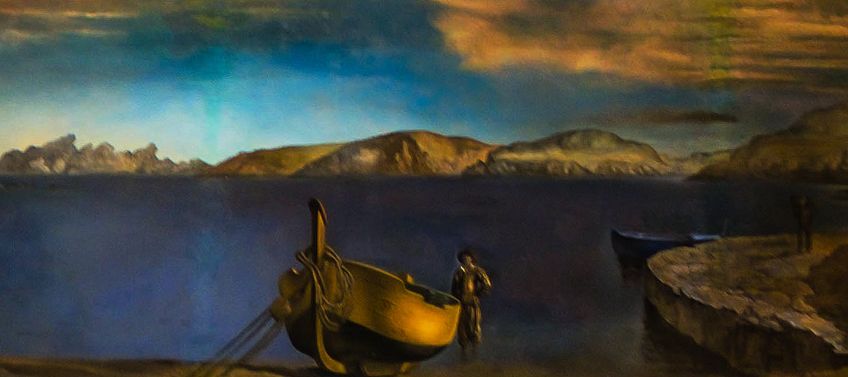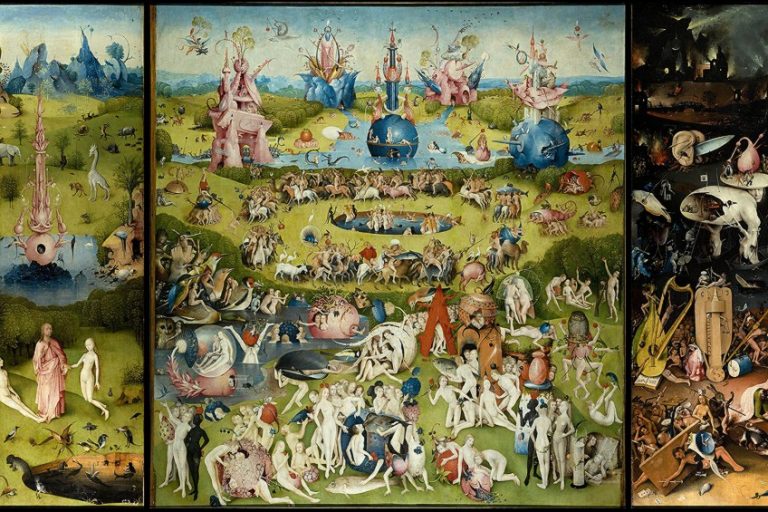“Christ of Saint John of the Cross” by Salvador Dalí – An Analysis
Salvador Dalí’s Christ of Saint John of the Cross is a mesmerizing fusion of surrealism and spirituality. Crafted in 1951, this iconic painting challenges conventions and invites viewers into a realm where the mundane and the divine converge. In this article, we’ll explore the symbolism, technique, and historical context behind Dalí’s masterpiece, delving into its timeless allure and profound depths of meaning. Join us as we unravel the mysteries of Christ of Saint John of the Cross and discover the artistic brilliance that defines this iconic work!
Table of Contents
Key Takeaways
- Salvador Dalí’s Christ of Saint John of the Cross, painted in 1951, blends surrealism with religious themes using an unusual perspective.
- The painting is renowned for its minimalistic style, focusing on the spiritual aspect of Christ without depicting physical suffering, and includes elements hinting at Dalí’s interpretation of modern science.
- Housed at the Kelvingrove Art Gallery and Museum in Glasgow, the piece remains an important part of Dalí’s legacy and continues to captivate audiences with its profound aesthetic and conceptual depth.
Creation and Concept
| Artist | Salvador Dalí (1904 – 1989) |
| Date Created | 1951 |
| Medium | Oil on canvas |
| Genre | Religious art |
| Period/Movement | Surrealism |
| Dimensions (cm) | 205 x 116 |
| Series/Versions | N/A |
| Where Is It Housed? | Kelvingrove Art Gallery and Museum, Glasgow, Scotland |
| What It Is Worth | Estimated to be invaluable (priceless artwork) |
The landscape of art was significantly altered when Dalí, a Spanish surrealist, unveiled this masterpiece. It emerged not only from his avant-garde flair but also from a “cosmic dream” he had, which he believed showcased the nucleus of the atom as a metaphor for the unity of the universe.
Dalí’s scientific inclination is thus subtly interwoven within the theological theme, signifying a harmonization of modern science with ancient spirituality.

Inspiration from Saint John of the Cross
In the 16th century, Spanish friar John of the Cross penned his contemplative visions that spoke of a profound mystical union with God, which significantly influenced Dalí’s artistic direction. Dalí, intrigued by the mystical writings and the idea of the Trinity found in Saint John’s poetry, sought to portray Christ in a perspective aligned with Platonic thought. This philosophical approach is woven into the very fabric of Dalí’s painting, where the union of spirituality and metaphysical elements is paramount.

Dalí’s Vision
Dalí’s rendering of Christ of Saint John of the Cross is credited to a cosmic dream he had in 1950, which left him with the enduring image of Christ suspended in the heavens. The dream’s vividness remained etched in his mind, resonating with his interest in the unity of the universe. Translating this vision onto canvas, the artist depicted a crucified Christ from a divine viewpoint – a portrayal distanced from earthly afflictions, a concept that can be interpreted as a nod to a metaphysical sense.
His wife Gala, serving as Dalí’s muse and critic, is said to have influenced his work, reinforcing the surrealism that defines the piece.
Formal Analysis
The painting Christ of Saint John of the Cross exhibits Salvador Dalí’s mastery of technique, perspective, and symbolism. Each component works in harmony to convey a powerful and unique representation of Christ.

Technical Aspects and Style
Salvador Dalí’s Christ of Saint John of the Cross reflects his exquisite technique, known for its sharpness and attention to detail. Dalí employs a hyperrealistic style, rendering the figure of Christ and the surrounding landscape with lifelike precision. The use of color is relatively subdued, with an emphasis on dark, cool tones, which contributes to the painting’s solemn atmosphere.
The light source emanates from the figure of Christ, giving it a sense of divine radiance.

Perspective
The perspective in Christ of Saint John of the Cross is particularly striking. Dalí presents Christ on the cross from an unusual, overhead viewpoint, as if observed from above. The cross does not intersect with the land or sea in the background, appearing to float in a darkened sky.
This unique angle eliminates the horizon line, creating an unearthly and infinite space around the central figure.

Symbolism
Dalí’s painting is rich in symbolic elements. The image of Christ is devoid of nails and blood, thereby avoiding the traditional depiction of crucifixion suffering and emphasizing sacrifice and redemption instead. The boat and fishermen in the background may symbolize the apostles or the Christian faith.
Furthermore, Dalí’s decision to not include the face of Christ invites viewers to contemplate the universal nature of the Christ figure, rather than a particular individual.

Display and Reception
The Christ of Saint John of the Cross by Salvador Dalí, housed at the Kelvingrove Art Gallery and Museum, has evoked a spectrum of critical evaluations since its public unveiling. The Kelvingrove Art Gallery and Museum in Glasgow serves as the exhibition space for Salvador Dalí’s Christ of Saint John of the Cross. This oil on canvas is one of the most distinguished items in the Glasgow Museum’s collection and is broadly recognized as one of Scotland’s favorite paintings.
Critics have had mixed responses to the painting over the years. Upon its initial arrival at the Kelvingrove, the art critique community engaged in lively debates.
Some art critics considered it a traditional work in contradiction to Dalí’s surrealist reputation, labeling it a mere ‘stunt’ from an artist known for his revolutionary approach. Despite this, the piece has solidified its position as a key work in the list of works by Salvador Dalí. The painting’s reputation and importance have not waned, seeing it frequently showcased not just within the Glasgow Museum but also internationally. It has been displayed in diverse locations, including New York, London, and the Dalí Museum in St Petersburg, Florida. The painting’s continual display across major exhibition venues underscores its universal appeal and confirms its status as a pivotal piece within Dalí’s oeuvre.
Influence and Legacy
Salvador Dalí’s Christ of Saint John of the Cross is renowned for its profound impact on art history, particularly within the Surrealist movement, and its lasting legacy in artistic and theological domains. Christ of Saint John of the Cross is one of Salvador Dalí’s most significant contributions to modern art. Created in 1951, the painting has been heralded for its innovative perspective and dramatic use of chiaroscuro. It is an archetype of Dalí’s mature period when he embraced religious themes, integrating them with atomic and hyper-realistic elements.

Christ of Saint John of the Cross is a centerpiece at Glasgow’s Kelvingrove Art Gallery and Museum and features prominently at the Dalí Museum in St Petersburg, Florida, alongside his other works from European art capitals. Despite initial skepticism, its acquisition for £8,200 by the Kelvingrove Gallery proved visionary. Dalí’s blend of surrealism and religious iconography in this piece has inspired artists globally, expanding the boundaries of the movement. Captivating audiences worldwide, the painting remains a vital reference in 20th-century art discussions, fueling ongoing scholarly interpretation and public fascination, solidifying its status as a timeless masterpiece with a profound legacy.
Salvador Dalí’s Christ of Saint John of the Cross exemplifies his unmatched creativity, fusing surrealism with religious motifs in a captivating manner. Its display in prestigious galleries like the Kelvingrove Art Gallery and the Dalí Museum reaffirms its enduring significance. As a timeless masterpiece, it continues to intrigue audiences worldwide, inviting reflection on Dalí’s visionary exploration of the divine and the subconscious. This iconic painting holds an esteemed place in art history, leaving an indelible mark on the collective imagination.
Frequently Asked Questions
How Does Dalí’s Christ of Saint John of the Cross Reflect Elements of Surrealism?
Salvador Dalí’s painting integrates Surrealism through its dream-like perspective and use of symbolism. The portrayal of Christ is suspended above the earth, representing a divine perspective, and the absence of nails and blood conveys a clean, otherworldly appearance, detaching the subject from the expected brutal realities of crucifixion. This piece pushes beyond the conscious mind’s boundaries to explore a transcendent experience.
What Is the Value and Market History of Christ on the Cross?
The value of Dalí’s Christ of Saint John of the Cross has appreciated significantly since its acquisition by Glasgow Corporation in 1952, thanks to its recognition as a masterpiece and its cultural significance. Its exact market value is not publicly disclosed, but the painting is considered one of Salvador Dalí’s most important and treasured works, often seen as a priceless piece of art history. The market history of the painting showcases both its endurance as a sought-after Dalí work and its prestigious standing in the art world.
Isabella studied at the University of Cape Town in South Africa and graduated with a Bachelor of Arts majoring in English Literature & Language and Psychology. Throughout her undergraduate years, she took Art History as an additional subject and absolutely loved it. Building on from her art history knowledge that began in high school, art has always been a particular area of fascination for her. From learning about artworks previously unknown to her, or sharpening her existing understanding of specific works, the ability to continue learning within this interesting sphere excites her greatly.
Her focal points of interest in art history encompass profiling specific artists and art movements, as it is these areas where she is able to really dig deep into the rich narrative of the art world. Additionally, she particularly enjoys exploring the different artistic styles of the 20th century, as well as the important impact that female artists have had on the development of art history.
Learn more about Isabella Meyer and the Art in Context Team.
Cite this Article
Isabella, Meyer, ““Christ of Saint John of the Cross” by Salvador Dalí – An Analysis.” Art in Context. February 19, 2024. URL: https://artincontext.org/christ-of-saint-john-of-the-cross-by-salvador-dali/
Meyer, I. (2024, 19 February). “Christ of Saint John of the Cross” by Salvador Dalí – An Analysis. Art in Context. https://artincontext.org/christ-of-saint-john-of-the-cross-by-salvador-dali/
Meyer, Isabella. ““Christ of Saint John of the Cross” by Salvador Dalí – An Analysis.” Art in Context, February 19, 2024. https://artincontext.org/christ-of-saint-john-of-the-cross-by-salvador-dali/.











